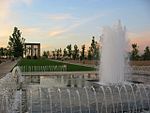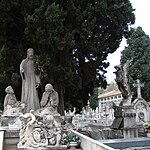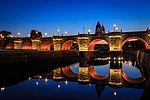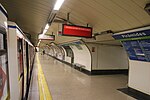Vicente Calderón Stadium

The Vicente Calderón Stadium (Spanish: Estadio Vicente Calderón [esˈtaðjo βiˈθente kaldeˈɾon]) was the home stadium of Atlético Madrid from its completion in 1966 to 2017, with a seating capacity of 54,907 and located on the banks of the Manzanares, in the Arganzuela district of Madrid, Spain. The stadium was originally called the Estadio Manzanares, but this was later changed to the Vicente Calderón Stadium, in honour of their long-term President Vicente Calderón. The stadium closed in 2017 after the conclusion of the 2016-17 season, with Atlético Madrid moving to Metropolitano Stadium for the following season. Demolition began in 2019 and completed the following year. A notable, and rather spectacular feature of the Vicente Calderón, was that the M-30 dual carriageway, running from the South Node Toledo Bridge, passed below one of the main stands.
Excerpt from the Wikipedia article Vicente Calderón Stadium (License: CC BY-SA 3.0, Authors, Images).Vicente Calderón Stadium
Calle 30, Madrid
Geographical coordinates (GPS) Address Nearby Places Show on map
Geographical coordinates (GPS)
| Latitude | Longitude |
|---|---|
| N 40.401719444444 ° | E -3.7206055555556 ° |
Address
Calle 30
Calle 30
28019 Madrid (Arganzuela)
Community of Madrid, Spain
Open on Google Maps











